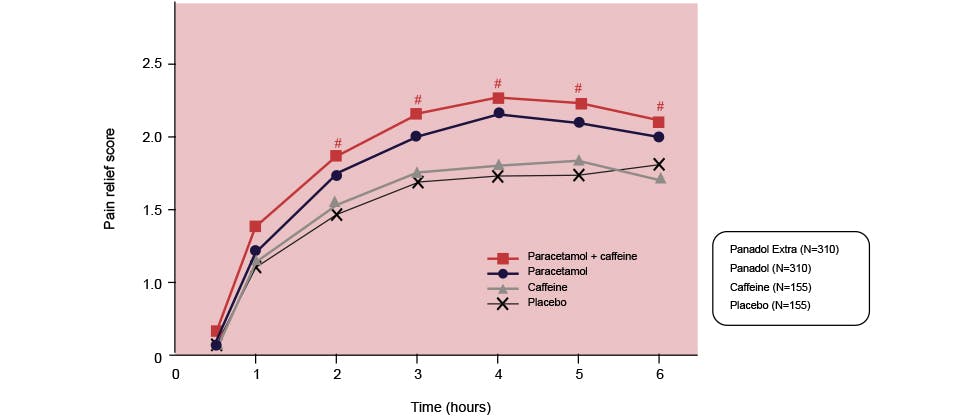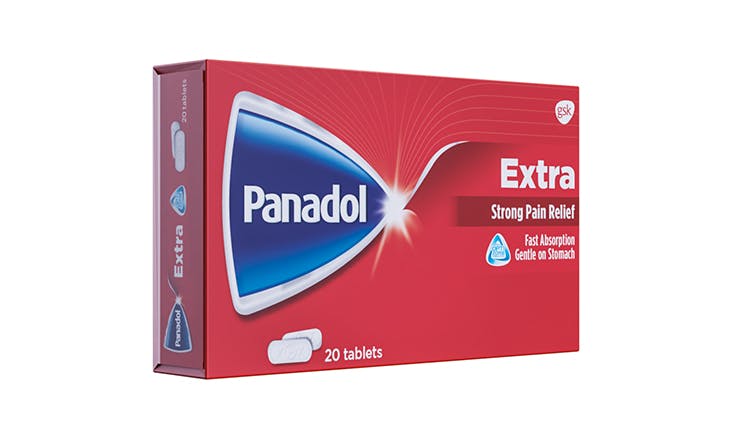Panadol Extra

Extra strength for tough pain1-3
With a dual formulation that fights tough pains such as headaches,1,4 migraines,5 dental pain6and menstrual pain.1 The addition of caffeine to paracetamol enhances the pain relief effect of paracetamol.7-9
_between_Panadol_Extra_and_sumatriptan_970x416.jpg?auto=format)
Effective relief even for migraines5
In a randomised, double-blind, cross-over phase IV, controlled trial, 92 patients with migraine were given either paracetamol 1000 mg + caffeine 130 mg or sumatriptan 50 mg.5
Panadol Extra Optizorb was as efficient as sumatriptan (generally used to treat migraines) for pain relief.5

Significant relief from menstrual pain1
This was a single-dose, placebo-controlled, double blind three-way crossover study in women with moderate-to-severe dysmenorrhoea (n=320). The total pain relief (TOTPAR) was assessed for 1000 mg paracetamol + 130 g caffeine, 1000 mg paracetamol alone and 130 mg caffeine alone or placebo.
Two tablets of Panadol Extra Optizorb provided significantly more pain relief than standard paracetamol tablets.1

Julie needs help for her menstrual pain
Julie is a young mum of two and works fulltime. Like her mother and grandmother, she’s suffered from primary dysmenorrhoea (menstrual pain) since her teens. Recently, Julie’s developed gastritis no thanks to her irregular meals and stressful days working and looking after the household.
She needs something to help her manage her menstrual pain effectively without aggravating her gastric problem.
Panadol Extra Optizorb with paracetamol and caffeine offers fast, effective and gentle relief for tough pains such as menstrual pain.
Recommend Panadol Extra Optizorb to fight tough pains

Panadol Extra Optizorb
Dual “active” formulation that fights tough pains.1,3-6
Learn more

Paracetamol
Paracetamol or acetaminophen is one of the most used analgesic and antipyretic over-the-counter drugs globally.
.jpg?auto=format)
Assessment of fever in adults13,14,15
To determine if a patient has fever, the most common route of taking a temperature in adults is a thermometer placed under the tongue (oral route).
If the temperature is > 38°C, consider that the patient is febrile.
Don’t forget to ask the patient for other symptoms to determine cause of the fever, “red flag” symptoms and if they require any other treatment recommendations other than medicines for fever.

Managing headaches and migraines
Learn more about how to effectively manage your patients’ headaches/migraines


